If your brand is looking to create a customer-centric website, don’t pass GO without understanding your buyer’s Jobs To Be Done.
What is Jobs To Be Done? How do you do it? And why?
In this article, you’ll get those answers and more.
In fact, by the time you’re done reading this, your idea of a successful customer-centric website may be entirely different … in a good way.
So, if you want to learn why the Jobs To Be Done framework is the most essential component of customer-centric website design, you’re in the right place.
Let’s get started...
What is the Jobs To Be Done Framework?
The Jobs To Be Done framework was originally an approach to developing products with a customer-centric mindset.
It replaced the notion that users “buy” the products they need, with the idea that products are “hired” to perform a job.
Using this logic, a product is more likely to be chosen for its ability to complete a job — or solve a customer's problem — than for its features alone.
For example, nobody really needs a ¼” drill bit. What they need is a ¼” hole. And that hole is part of a bigger need ... to help build or repair something.
The drill bit (product) is essentially “hired” to deliver an outcome.
This new way of thinking created a major shift in how many brands develop and market their products. But the Jobs To Be Done framework was also made for customer-centric website design.
Or, perhaps it’s the other way around.
Either way, if your brand wants to connect with its buyers in a more relevant way … one can’t live without the other.
It doesn’t matter if your website is selling gym memberships, financial software, industrial flooring or cupcakes … your buyer is looking to “hire” a solution to their problem.
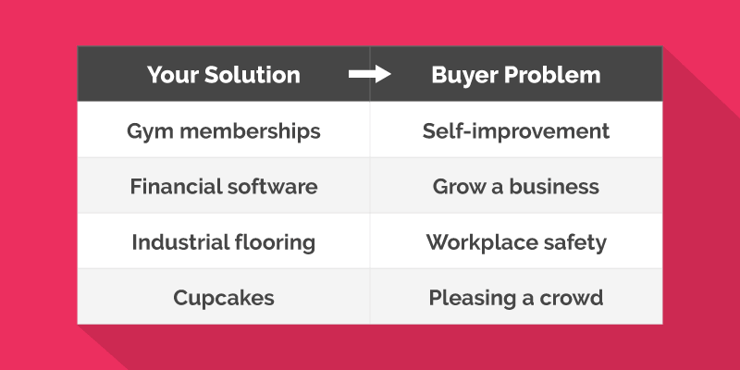
Sure, they’ll want to learn about your gym equipment, flooring options, or cupcake flavors — but first, they need to trust that your solution fits the problem they need to solve.
The Jobs To Be Done framework is your ticket to earning that trust, by framing messages around your buyer’s needs and challenges, not the benefits and features of your solution.
Ready to learn it? Let’s dive in...
The Jobs To Be Done Framework: An Overview
Lots of brands create “Buyer Personas” or “Avatars” to better understand their customers.
While these can be helpful as basic demographic profiles, you’ll want to dig deeper into the emotional needs, challenges and motivations that drive your target audience.
The Jobs To Be Done framework does just that.
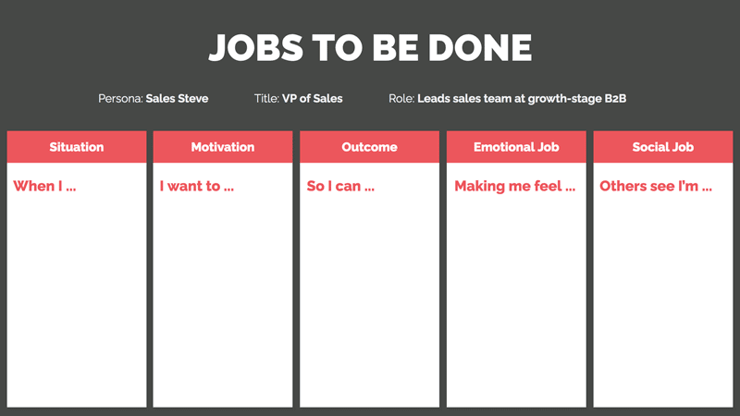
Grab this free Jobs To Be Done template here.
By completing a series of simple, fill-in-the-blank statements, you’ll highlight the real reasons a buyer will move toward (or away from) your offering.
Customer-centric messaging is built on the foundation these insights provide.
Ready for step one?...
Step 1: The Situation
The first step is to define the underlying circumstances prompting your buyer's needs.
Using our previous examples, let’s complete the statement “When I … .” 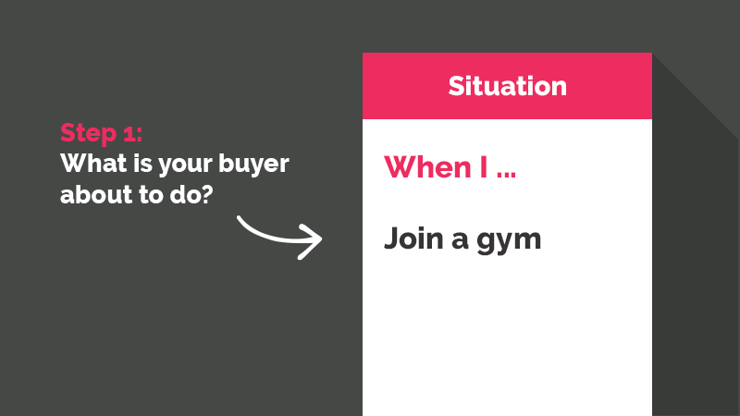
Those situations might read something like this:
“When I … join a gym.” (gym membership)
“When I … renovate our warehouse.” (industrial flooring)
“When I … host a birthday party.” (cupcakes)
As simple as this first step seems, without it comes the risk of building an entire website that focuses on the wrong problem or, worse yet, a problem that doesn't really exist.
With a clearly defined situation, we’re ready to dig deeper...
Step 2: Motivation
This step will feel oddly familiar to anyone with small children who constantly ask “Why?”
In fact, those kiddos are really onto something. When they’re not satisfied with the first answer, it’s because they know there’s more to it - the “real” reason.
In the Jobs To Be Done framework, that “real” reason is our buyer’s MOTIVATION.
We uncover that by completing the phrase: “I want to …”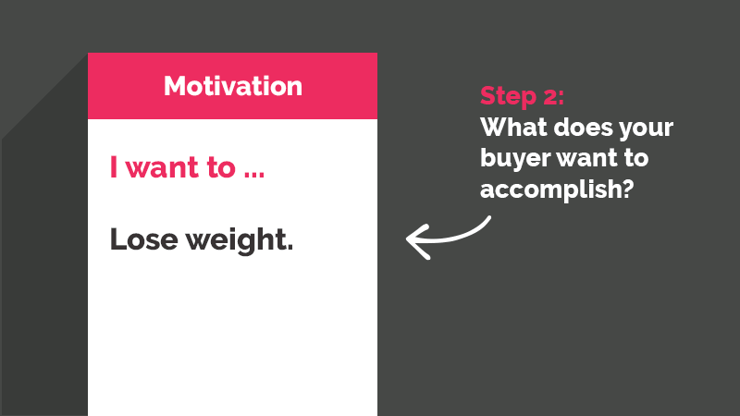
Using our examples:
“I want to ... lose weight.” (gym)
“I want to … create a safer environment for our workers.” (flooring)
“I want to … show every guest a great time.” (cupcakes)
Narrowing your buyer’s wants down to a single motivation is essential. From here, it will be that much easier to craft a message that resonates.
Enough scratching the surface, now we’re ready for the good stuff…
Step 3: The Outcome
The concept of customer outcomes is more than a step in a strategy exercise. It’s a pillar of customer-centric marketing.
When we stop selling products and services — and start selling the positive OUTCOMES they provide — we’ve shifted to the customer-centric mindset.
That’s why this step is where things really start to take shape.
We’re digging deeper yet. Uncovering the real reason our buyer wants a solution, by finishing the thought: “So I can … “
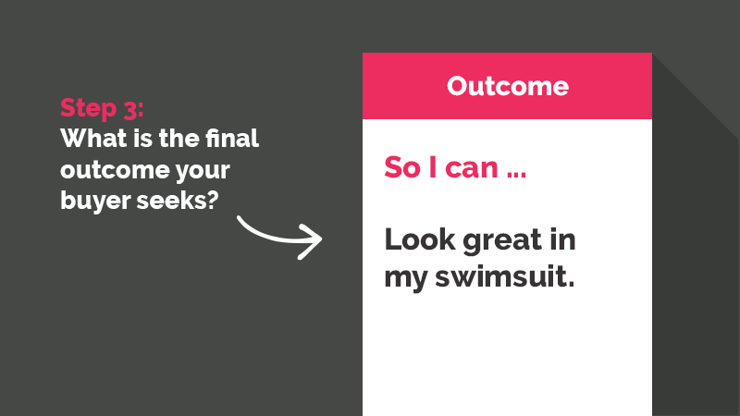
Buyer outcomes might read like this:
“So I can … look great in my swimsuit.” (gym membership)
“So I can … build a vibrant corporate culture.” (industrial flooring)
“So I can … create a lasting memory.” (cupcakes)
Every buyer has a successful outcome in mind. The more your messaging relates to that outcome, the more they will trust your brand to lead them there.
Now, we're getting beneath the surface. Which leads us to...
Step 4: Emotional Job
It doesn’t take a professional marketer to understand that consumers — ALL of us — buy for emotional reasons. And justify our buying decisions with logic.
Lest you think some purchases are exempt from our inner feelings, here’s an example as plain as dirt. Literally.
I recently purchased bags of planting mix while adding new shrubs to the sparse landscape around my lawn. Did the words “lush” and “vibrant blooms” on the bag prompt a vision of the perfect summer day with my newly beautified yard on display for the neighborhood?
You bet.
Did I justify the extra cost of the organic blend because of it?
I sure did.
By taking buyers’ needs, wants, and motivations a step further, we uncover the emotional reasons behind it all.
With Jobs To Be Done, it’s as simple as completing the thought: “Making me feel …”
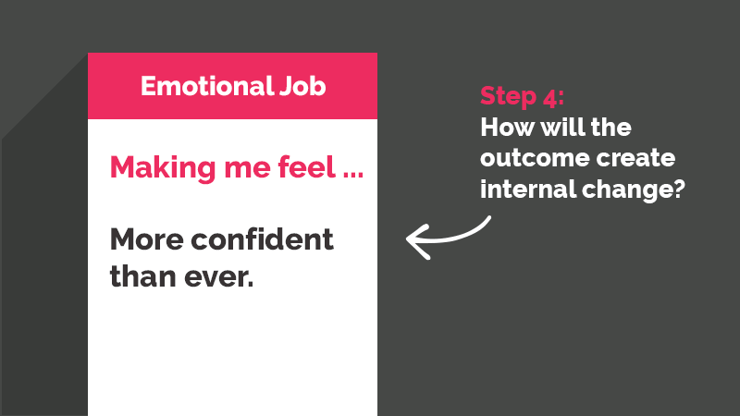
A buyer’s emotional job might look something like this:
“Making me feel … more confident than ever.” (gym membership)
“Making me feel … appreciated by all.” (industrial flooring)
“Making me feel … like the world’s best mom.” (cupcakes)
By homing in on the emotional job your buyers most want to solve — how your solution will make them feel — your customer-centric website is ready to move them.
All that’s left is one final step…
Step 5: Social Job
Often to a fault, we all care deeply about what others think of us.
Whether we want to be viewed as smart, attractive, successful, or simply to blend in.
It’s a big part of the choices we make every day, and buying decisions are no different.
Using Jobs To Be Done, we relate to a buyer’s desired social status by completing the phrase: “Others see I’m … “
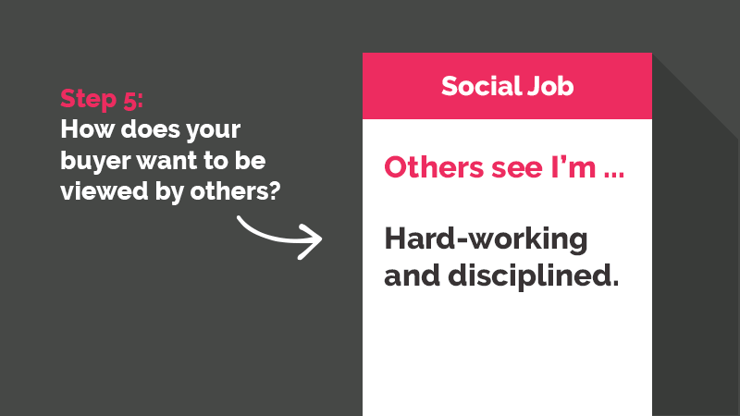
Here’s a few:
“Others see I’m … hard-working and disciplined.” (gym membership)
“Others see I’m … a likable leader.” (industrial flooring)
“Others see I’m … someone to admire.” (cupcakes)
Social status isn’t just a consideration for buyers who want to be enviable.
There’s a social component to every buying decision and, for those that aren’t obvious, Jobs To Be Done will help bring them to the surface … and into your customer-centric website.
Actionable Advice:
Is your brand ready for a customer-centric website?
If so, here’s some advice...
Demographics, buyer personas, and avatars are an effective way to define your target audience.
But, the Jobs To Be Done framework is the key to creating the right message for them.
And your customer-centric website can’t succeed without that message.
When done right, your customer-centric website will engage buyers, earn their trust and guide them into your sales pipeline consistently and predictably. Toward the outcome your solution promises.
Ready to take your customer-centric game to the next level? Grab your Free Customer-Centric Home Page Template. Follow 12 simple steps to a high-performing home page that will engage and convert your audience. Plus, a copy template to make writing your content a breeze, a CTA checklist to drive more conversions, an essential site optimization guide, and more.
At Brand Theory, we incorporate the Jobs to be Done framework into our website design and content marketing strategies for clients because understanding your target audience's tasks, motivations, and desired outcomes is key to crafting effective messaging and developing websites that drive conversions. If you're ready to take the guesswork out of marketing and scale your brand profitably and predictably, book a no-obligation introduction to Brand Theory today.





.png)
.png)
.png)